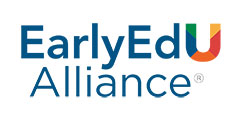California Transitional Kindergarten – Impetus for Action
California Transitional Kindergarten Case Study
Impetus for Action
The current vision for early childhood education in California is laid out in the state’s Master Plan for Early Learning and Care: California for All Kids, which the state’s Health and Human Services Agency released in December 2020. The master plan, which was developed with significant family and stakeholder input, outlines steps to building a “comprehensive and equitable early learning and care system in the state” including universal preschool and funding reforms to support the ambitious early learning policies to be developed over time. The plan repeatedly references equity issues—for young children and the ECE workforce—and–proposes prioritizing the phased-in expansion of universal preschool in high-poverty elementary schools. It references the need for TK and “preschool options offered by family childcare homes and centers that meet comparable standards.”10“Master Plan for Early Learning and Care: California for All Kids,” California Health and Human Services Agency, (December 2020).
Salient throughout the master plan is a commitment to parental choice of programs. Proponents of the TK expansion say the policy directly addresses this goal. The state’s 4-year-olds “now have an amazing array of options,” says Scott Moore, chief executive officer of the Bay Area childcare and preschool nonprofit Kidango. These options do not ensure access to families that do not meet income eligibility requirements—a key difference from TK. Moore, who served as executive director of California’s Early Learning Advisory Council, advocated strongly for the expansion, which he says provides children and families with a permanent choice for 4-year-olds: “We can never say you can’t come.”11Scott Moore, interviewed by Alice Porter, August 10, 2022.
In addition to preserving options for children and families, the plan makes specific references to early learning to break the cycle of poverty and improve long-term education outcomes for all children. These goals are closely tied to children’s performance in school over time, and in this area, California’s schools are widely acknowledged to be falling short. A 2020 report from the state Legislative Analyst’s Office (LAO)12California Legislative Analyst’s Office, (January 31, 2020), 4. reveals the dimensions of California’s significant and persistent achievement gaps, which are closely tied to race, ethnicity, and family income:
- Standardized test scores from 2018 reveal that African American children in the state ranked considerably lower in performance than Latino, White, and Asian students.
- Students from low-income families across all racial and ethnic groups performed lower on the tests.
- Children from low-income families, those in foster care, and youth experiencing homelessness, English language learners, and children and youth with disabilities have lower graduation rates than the state average and are significantly less prepared for college and work.
- Foster children and youth and African American children have higher than average rates of chronic absenteeism, and foster youth also experience the highest rates of suspension.
The following figure uses data from California Department of Education to represent the ethnic diversity of California’s child population.
Figure 3. California child population by ethnicity

The LAO recommends that the state support intensive intervention in districts with persistent achievement gaps. Early education advocates contend that the problem begins when large groups of California children enter kindergarten without sufficient preparation to succeed. School readiness— incorporating physical, cognitive, and social and emotional development—is widely recognized as a powerful tool to achieve more significant equity in primary education. A 2018 technical report on student achievement gaps in California found that large socioeconomic achievement gaps emerge even before children enter kindergarten.13Sean F. Reardon, et al, “Getting Down to Facts II: A Portrait of Educational Outcomes in California,” Stanford University, Rand Corporation, (September 2018), 30. The table below shows the achievement gap by ethnicity and income.
| By Race and Ethnicity | Percentages | Selected other groups | Percentages |
|---|---|---|---|
| African American | 73% | Low income | 80% |
| Asian | 94% | Homeless youth | 69% |
| White | 87% | Foster youth | 55% |
| Latino | 81% | English learners | 68% |
| Students with disabilities | 66% |
Source: Narrowing California’s K-12 Student Achievement Gaps, LAO, 2018
A recent analysis by the Public Policy Institute of California (PPIC, 2020) found that through the 2019-20 school year, 60% of TK students came from low-income families, which is consistent with the share for all public-school students in the state. Statewide, TK has attracted high numbers of Latino children, but African American children are under-enrolled in the program. Participation in TK has also varied widely across school districts, with take-up rates in the largest districts ranging from 10% in San Francisco’s to 36% in Los Angeles’s unified school districts. The PPIC found that the most common reason for unenrolled eligible students is that their local school does not offer the program. The following figure taken from the PPIC 2020 report, shows that districts providing TK, tend to offer it at the majority of schools.
Figure 4. Percentage of schools offering TK by district type

Citations
- 10. “Master Plan for Early Learning and Care: California for All Kids,” California Health and Human Services Agency, (December 2020).
- 11. Scott Moore, interviewed by Alice Porter, August 10, 2022.
- 12. California Legislative Analyst’s Office, Narrowing California’s K-12 Student Achievement Gaps,” (January 31, 2020), 4.
- 13. Sean F. Reardon, et al, “Getting Down to Facts II: A Portrait of Educational Outcomes in California,” Stanford University, Rand Corporation, (September 2018), 30.
